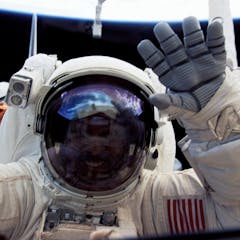
Articles on NASA
Displaying 81 - 100 of 467 articles

With more than 5,000 known exoplanets, astronomers are shifting their focus from discovering additional distant worlds to identifying which are good candidates for further study.

Five new studies show smashing spacecraft into asteroids could be a viable way to defend Earth from threatening space rocks.

With more than 100 lunar missions planned in coming years, space junk near the Moon could become an issue for humanity. No agency tracks lunar space junk, so two astronomers decided to do it themselves.

Batteries could well be powering short-haul flights in the near future.

A new image has been taken of the whole Earth 50 years after the first - revealing noticeable changes to its surface.

Proponents of mining in space often point to the potential benefits for Earth and its people. But this research casts doubt on many of them.

Since ancient times, the stars have been set to music. Modern technology now enables scientists to convert images of space into real compositions.

NASA has been gaining momentum in recent years as investment into space has ramped up in the US. In 2022, missions dealt with the farthest, closest, hottest and coldest conditions in the universe.

From space agency missions to private space launches, 2023 will be an exciting year in space.

A year on since the historic launch of the most powerful infrared telescope in human history, we admire and explore some of the best images it delivered in 2022.

It has been one year since the launch of the James Webb Space Telescope and six months since the first pictures were released. Astronomers are already learning unexpected things about the early universe.

Canadian space technologies and innovations play a significant role in the Artemis missions, and our involvement reflects our growing role in this new era of lunar exploration.

A new photo taken on the Artemis I mission shows Earth isn’t a sealed spaceship, but is in dynamic interchange with the cosmos.

Blue Marble is the last photograph of the whole Earth taken by an actual human using analogue film: developed in a darkroom when the crew returned to Earth.

Spacecraft are just a small part of what it takes for humans to become an interplanetary species. A political science professor explains how there is much more to creating a spacefaring society.

The European Space Agency has recruited the world’s first-ever disabled astronaut. But we’re still a long way from space being accessible to all.

Artemis-1 is on its way back to Earth, successfully completing its maiden flight.

Tracking CO2 emissions with satellites can help to support emission reduction efforts under the Paris Agreement.

Many galaxies are too faint or small for us to observe easily – but science can help us work it out.

If you see something mystifying happening in Europe’s skies, get in touch with France’s Study and Information Group on Unidentified Aerospace Phenomena. They could well have a rational explanation for you.
